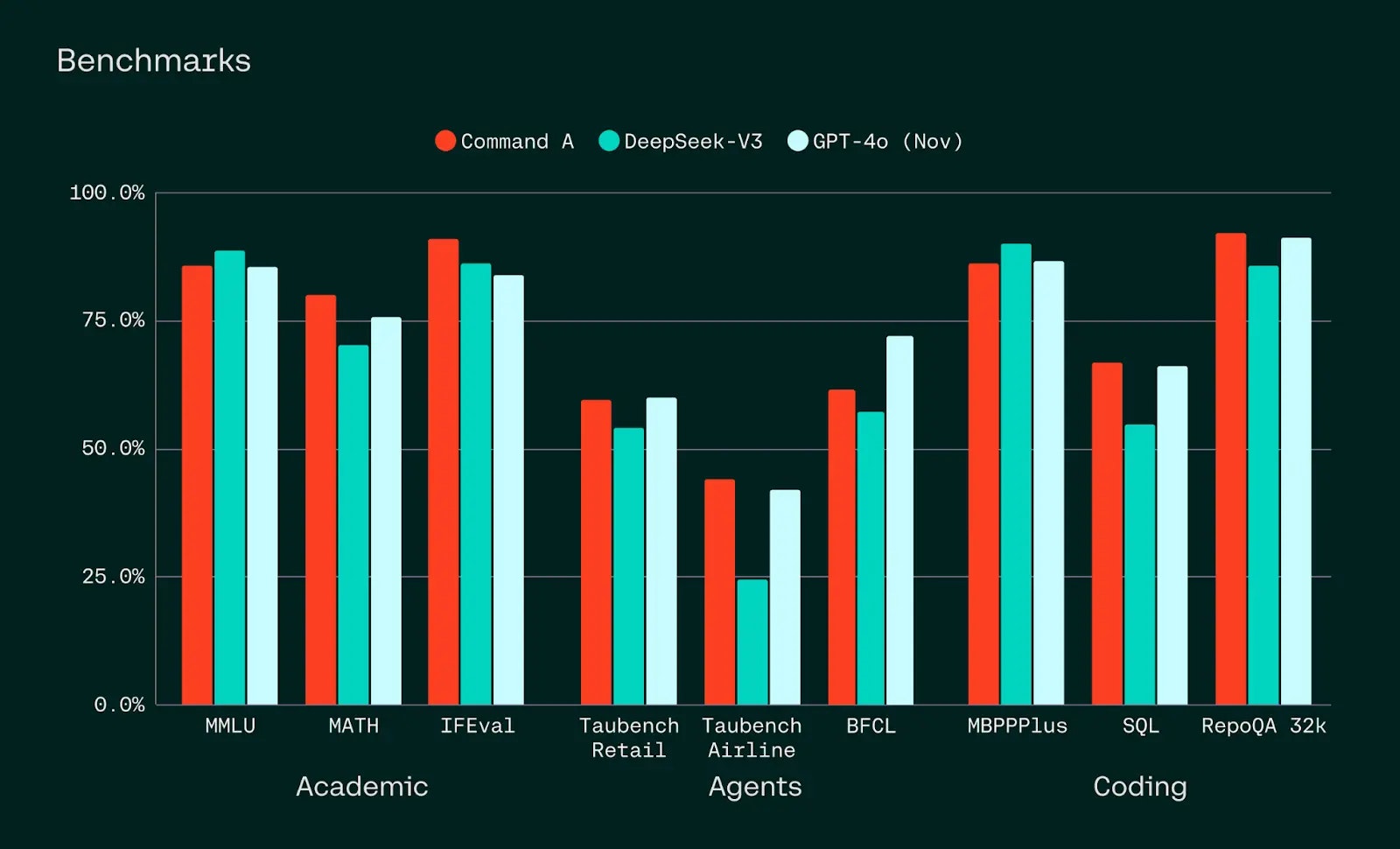
Table of Contents
Overview
In the ever-evolving landscape of AI, finding the right large language model (LLM) for your enterprise needs can be a game-changer. Enter Command A, Cohere’s most advanced LLM, designed specifically for high-performance enterprise applications. Boasting impressive specifications and a focus on practical applications, Command A aims to empower businesses with cutting-edge AI capabilities. Let’s dive into what makes Command A stand out and whether it’s the right fit for your organization.
Key Features
Command A comes packed with features designed to tackle complex enterprise tasks. Here’s a breakdown of its key capabilities:
- 111B Parameters: A massive parameter count allows for deep understanding and nuanced responses.
- 256K Token Context Window: An exceptionally large context window enables processing of extensive documents and maintaining context across long conversations.
- Tool Use Support: Seamless integration with external tools to enhance functionality and automate workflows.
- Retrieval-Augmented Generation (RAG): Combines the power of the LLM with external knowledge sources for accurate and contextually relevant responses.
- Agent Readiness: Designed to power intelligent agents capable of complex decision-making and task execution.
- Multilingual Capabilities: Supports multiple languages, enabling global reach and communication.
- High Throughput: Processes information quickly and efficiently, ensuring timely results.
- GPU-Efficient: Operates efficiently on just two GPUs, minimizing infrastructure costs.
How It Works
Command A leverages its massive 111 billion parameters and expansive 256K token context window to process large-scale text inputs with remarkable depth. This allows for a comprehensive understanding of the information provided, leading to more accurate and relevant responses. The model seamlessly integrates with external tools and databases, enabling retrieval-augmented generation (RAG) for enhanced knowledge and context. Furthermore, Command A supports complex workflows, including agent-based systems and multilingual interactions, making it a versatile solution for various enterprise applications.
Use Cases
Command A’s capabilities make it a valuable asset for a wide range of enterprise applications. Consider these potential use cases:
- Enterprise Document Analysis: Extract key insights and automate summarization of large volumes of documents.
- Intelligent Chatbots: Develop sophisticated chatbots that can understand and respond to complex customer inquiries.
- Customer Support Automation: Automate routine customer support tasks, freeing up human agents to focus on more complex issues.
- Multilingual Information Retrieval: Retrieve information from diverse sources in multiple languages, breaking down language barriers.
- Tool-Assisted Content Creation: Streamline content creation workflows by leveraging AI to generate drafts, suggest improvements, and automate editing tasks.
- Knowledge Base Augmentation: Enhance existing knowledge bases with AI-powered insights and recommendations.
Pros & Cons
Like any powerful tool, Command A has its strengths and weaknesses. Here’s a balanced look at its advantages and disadvantages:
Advantages
- Extremely large context length allows for processing of extensive documents and maintaining context.
- High throughput ensures efficient processing and timely results.
- Efficient GPU usage minimizes infrastructure costs.
- Multilingual and RAG capabilities enable global reach and enhanced accuracy.
Disadvantages
- Requires high-performance infrastructure to operate effectively.
- Limited open-source transparency may be a concern for some organizations.
How Does It Compare?
When evaluating LLMs, it’s crucial to consider the competition. Command A stacks up against other leading models in the following ways:
- OpenAI GPT-4: While GPT-4 enjoys wider adoption, Command A offers more transparent performance, particularly in retrieval-augmented generation (RAG) scenarios.
- Anthropic Claude 3: Claude 3 excels in alignment, but Command A boasts a significantly longer context length, making it better suited for tasks requiring extensive contextual understanding.
Final Thoughts
Command A presents a compelling option for enterprises seeking a powerful and versatile large language model. Its impressive context window, high throughput, and focus on practical applications make it a strong contender in the AI landscape. While the need for high-performance infrastructure and limited open-source transparency are factors to consider, Command A’s capabilities in RAG, tool use, and multilingual support position it as a valuable asset for organizations looking to leverage AI for enhanced productivity and innovation.

